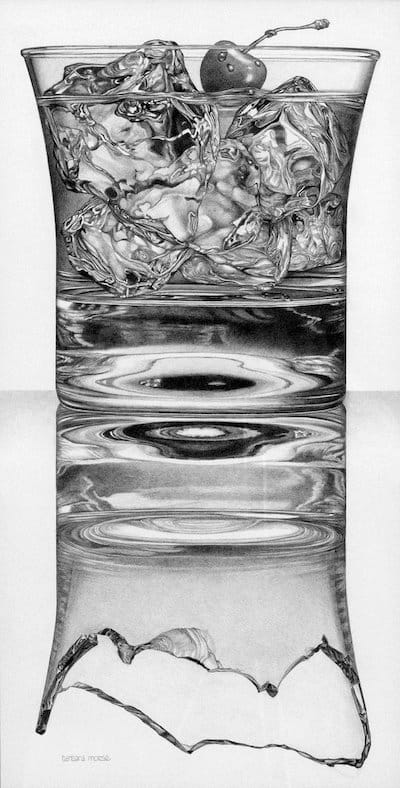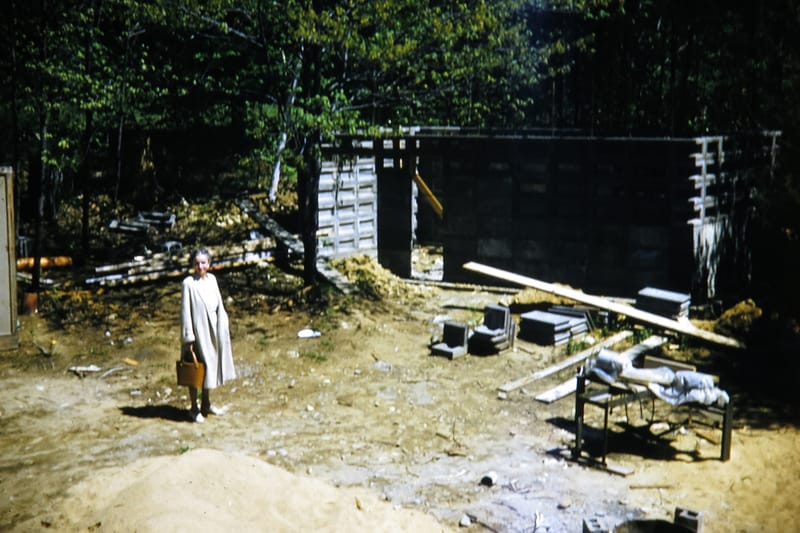Barbara Morse exhibition: Breathtaking art to support future art students
I was incredulous at the detail and realism Barbara achieved. And by minimizing color, she invited the viewer in to use their imagination and become almost a collaborator in the work.

I had the privilege of meeting artist Barbara Morse long ago and far away – in the ’90s when I lived in Nashua. Today I don’t recall what I noticed first: her long mane of lustrous dark hair, or her infectious and slightly mischievous laugh. But both were already well imprinted on me when I discovered she produced captivating works of art, done almost solely in graphite, which looked photo-realistic. They were breathtaking.

When I was in high school I had taken several years of drafting, where we used carefully sharpened pencils, along with T-squares, triangles, and scales to produce drawings of engineering-level precision. But still I was incredulous at the detail and realism Barbara achieved. It took me still longer to realize that by minimizing color and other realistic elements, she invited the viewer in to use their imagination and become almost a collaborator in the work.
To my lasting sorrow Barbara passed away last November from cancer.
To my great joy some of her artwork is still available for viewing and may be purchased. Her art may be viewed at The Factory on Willow (252 Willow St., Manchester) through August 9. Proceeds from sales will contribute to a scholarship in Barbara’s name which will be given annually to a NH high school graduate planning to pursue an advanced degree in art.
Proceeds will also be shared among several local arts organizations:
- the New Hampshire Art Association,
- the NH Chapter of the Women’s Caucus for Art, and
- the NH Business Committee for the Arts.
The pieces on display were curated by Amy Regan of Manchester’s See-Saw Art.
You may also contribute directly to the Barbara Morse memorial scholarship fund here.
Thirteen giclee prints of Barbara’s work may be purchased here. Priced at $195 each, proceeds from these sales will contribute to the scholarship and arts organizations as described above.
During the opening weekend of this showing of Barbara’s art, the following speech was delivered by fellow artist Kevin Dadoly (also NHAA Board President):
My name is Kevin Dadoly and I have been an artist my entire life. I have spent decades of my life teaching people to paint, as a result I have seen and critiqued thousands of works of art. I am very honored to be here today to talk about the work of a great artist, Barbara Morse. I have always been fascinated by her work.
I had the pleasure recently to meet with Alan and tour Barbara’s studio. For me it was a bittersweet experience. Her studio, as one might imagine, was meticulous with everything in high order. I have visited many an artist’s studio and those are not words I would ever use to describe any of them. But like her studio, Barbara’s artistic process was also thoughtful, intentional and organized. She had folders of inspirational images which she would pull from to compose each piece, much like a musician pulls notes when creating music. Her images of inspiration were really just a jumping off point for her. She could look at an image such as a photograph and reimagine it to view the side she needed. To be clear, if she saw the front of something she could draw the back with every bit of detail she required without a reference. Her studio was a perfect room filled with sparks of inspiration.
The tool of choice for Barbara’s work was a pencil. It was just a pencil. But somehow in her hand it became magic. With it she took complete control of her story. She made the pencil push its boundaries! Her mind, her hand and the pencil were at one… a drawing machine.
When you look at her work you realize each piece captures you and invites you to take a closer look and develop your own connection and translation. She provides the viewer with just a starting point for an internal conversation.
She had trained all of her life to create and Barbara had achieved the pinnacle of artist ability; she was able to create without struggle. Very few artists achieve this level of skill and the freedom that comes with it.
Her attention to detail was not just in the drawing, but also to the story she was telling with each piece. Her compositions are all deliberate and designated with such finesse.
Her work is all at once nostalgic, beautiful, crisp and edgy. She was able to brilliantly render drawings from the softness of “Off the Hook,” her painting of a bed and a phone, to the razor edge of broken glass in her piece “Broken Bottle.”
If you look closely at some of her work you will see slight blushes of color. It is a mere suggestion that softly enhances the piece. The restraint that she uses in keeping the color quiet or using it only for punctation in the drawing becomes so powerful.
Her inspiration came from everywhere. From daily life to life memories. In some cases it’s a nostalgic hook such as in the piece “Old Flame,” about the kitchen stove. A potholder that we have all held in our hands, subtly hangs on the oven door. One can almost smell what is in the oven.
In another piece, the one with the fishing lure racing through the water, splashing in the bubbles…she builds so much excitement, the viewer is left to wonder what was the rest of the story?
She really impressed me with “Shiver my timbers”– she shows how to get things right! – where she captures the chaos of rigging from a ship. Here the artist lets herself go for the sake of the piece. The rigging is enhanced by her imagination. Imagine managing this challenge and being able to create such a strong piece.
One extraordinary piece, “Pecking Order” – you will remember it as eggs in the egg carton with a chick. This drawing somehow has more detail than a photograph. How is it possible that an artist can achieve this level of detail? Talent!
With her work she was able to freeze ordinary moments of time for us to appreciate. She slowed down those moments and showed us how she saw their beauty. These frozen moments which make up her work are a brilliant look into the artist’s mind. So often she saw humor in her subjects. Her details made us smile as she took us on her journey. The selection of her pithy titles really pulled everything together.
One more area of excellence in her work I want to speak about are her portraits. What most people do not realize is that when you create a portrait, if any of the measurements are off (for example the space between the end of the nose and the beginning of the mouth) the entire portrait looks off. Creating a good portrait is really, really challenging for most artists. But not for Barbara. Every one of her portraits is a master class in perfection. The same is true of her drawings of hands.
Today as we honor Barbara, her collection is now complete. While I am certain Barbara has left a legacy of love and the warmth of a million special memories for her beloved Alan and their family, for the rest of us and the world she has left us flashes of brilliance with her life’s work. She will be remembered as a remarkable artist forever because of the magic she brought to her pencils.





